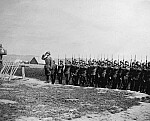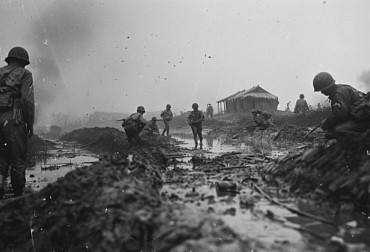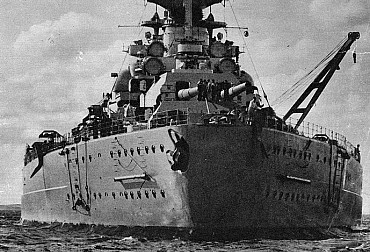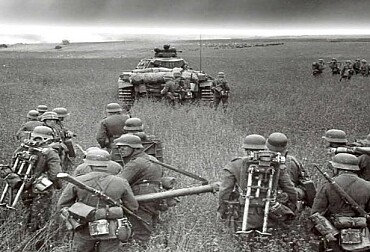August 6th 1945: The Day the World Changed
The summer of 1945 found the world in a state of exhausted anticipation. World War II, a conflagration that had consumed continents and claimed tens of millions of lives, was slowly sputtering to an end in Europe, but the Pacific theater remained a bloody and protracted struggle. Japan, despite overwhelming Allied superiority and the devastating strategic bombing campaigns that had already ravaged its cities, continued to resist fiercely. Battles like Iwo Jima and Okinawa had demonstrated the fanatical resolve of Japanese defenders, leading Allied planners to project a full-scale invasion of the home islands – Operation Downfall – as an apocalyptic undertaking, potentially costing millions of Allied and Japanese lives. Amidst this grim calculus, a monumental secret project, born of scientific ingenuity and wartime urgency, was about to unleash a force never before witnessed by humanity: the atomic bomb.
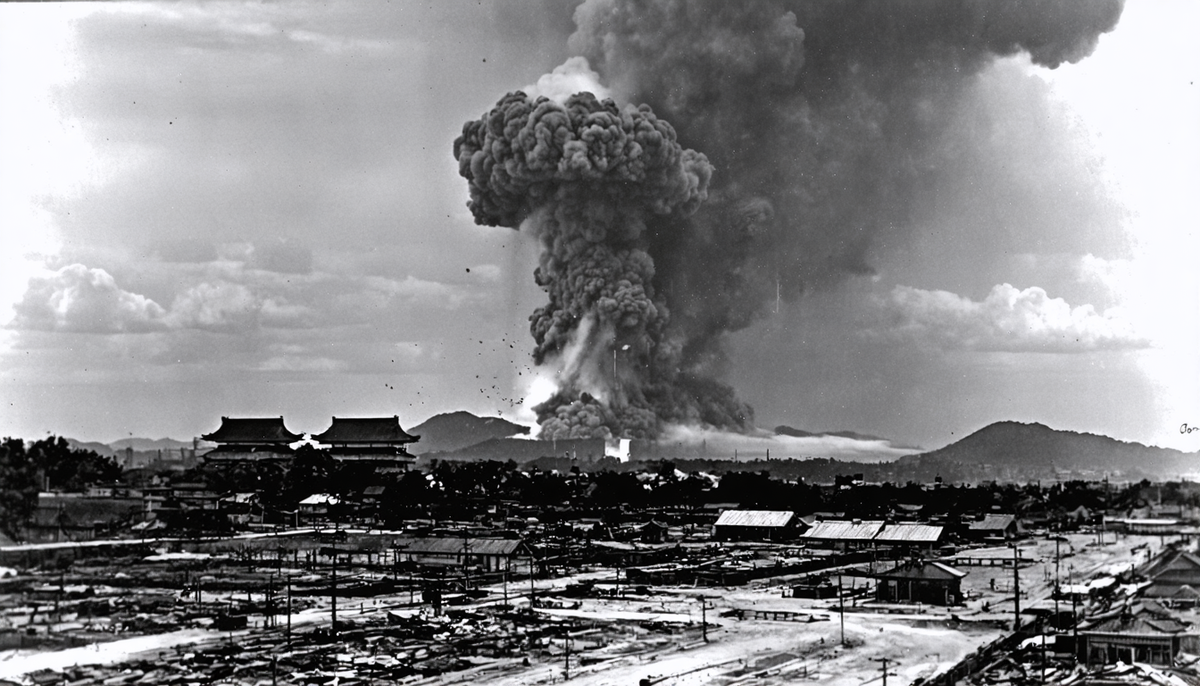
The Genesis of Destruction: The Manhattan Project
The journey to Hiroshima began years earlier in the shadows of the "Manhattan Project," a top-secret research and development undertaking by the United States, with the support of the United Kingdom and Canada. Initiated out of fear that Nazi Germany might develop atomic weapons first, this colossal scientific and engineering endeavor mobilized hundreds of thousands of individuals and billions of dollars. Under the scientific leadership of J. Robert Oppenheimer and the military direction of General Leslie Groves, physicists, chemists, engineers, and technicians toiled in clandestine facilities across the U.S. – from Los Alamos, New Mexico, to Oak Ridge, Tennessee, and Hanford, Washington. Their goal: to harness the immense power released by nuclear fission.
On July 16, 1945, at the Trinity test site near Alamogordo, New Mexico, the first atomic device, "The Gadget," was successfully detonated. The blinding flash, the mushroom cloud, and the sheer destructive force astonished even its creators, confirming the terrifying potential of their creation. With this successful test, President Harry S. Truman, who had only recently assumed the presidency after Franklin D. Roosevelt's death, was faced with an unprecedented decision: whether and how to use this ultimate weapon to bring the war to an end.
The Decision and Target Selection
The ethical implications of using such a weapon against a civilian population were profound, yet the prevailing view among many policymakers and military strategists was that it was a necessary evil. Arguments in favor included:
- Saving Lives: The primary justification was that the bombs would avert a land invasion of Japan, which was predicted to cause catastrophic casualties on both sides.
- Accelerating Surrender: It was hoped that the shock and awe of the atomic bombs would force Japan's unconditional surrender quickly, thereby preventing further conventional bombing, blockades, and a prolonged war.
- Demonstration of Power: Some also saw the bomb as a powerful deterrent, sending a clear message to the Soviet Union about American military might in the nascent Cold War era.
The Potsdam Declaration, issued by the Allied powers on July 26, 1945, called for Japan's unconditional surrender, warning of "prompt and utter destruction." Japan's refusal, dismissing it as "unworthy of public notice," solidified the decision to proceed.
A target committee selected several cities for atomic bombing, chosen for their military significance, industrial activity, and crucially, because they had largely been spared from conventional bombing raids, allowing for a clear assessment of the atomic bomb's effects. Hiroshima, a bustling city with a population of approximately 350,000, was a major military headquarters, an important communications center, and a supply depot for the Japanese army. It was deemed an ideal primary target.
The Fateful Mission: August 6, 1945
In the predawn hours of August 6, 1945, at Tinian Island in the Mariana Islands, a modified B-29 Superfortress bomber, named the "Enola Gay" after the pilot's mother, stood ready. Colonel Paul Tibbets, commander of the 509th Composite Group, was at the controls. Aboard were twelve crew members, including bombardier Major Thomas Ferebee, who had the unenviable task of aiming the bomb, and Captain Robert Lewis, co-pilot, who recorded in his log, "My God." Loaded into its bomb bay was "Little Boy," a uranium-235 fission bomb, approximately 10 feet long, 28 inches in diameter, and weighing 9,700 pounds. It was a crude, untested weapon in terms of actual combat deployment, but its destructive potential was undeniable.
At 2:45 AM, the Enola Gay lifted off, accompanied by two observation planes (The Great Artiste and Necessary Evil) carrying scientific instruments and cameras. The flight to Hiroshima was uneventful. Over Shikoku, the weather reconnaissance plane reported clear skies over the target, giving the final go-ahead. Below, Hiroshima's morning was just beginning. Commuters were heading to work, children were playing, and many were already out in the open, unaware that their lives were about to change forever.
The Moment of Unimaginable Impact
At 8:15 AM local time, as the Enola Gay flew at an altitude of 31,000 feet, Major Ferebee released "Little Boy." The bomb plummeted for 43 seconds, armed by its barometric fuses, before detonating at an altitude of approximately 1,900 feet (580 meters) directly above the Shima Surgical Clinic, a point now known as the hypocenter, just outside the Prefectural Industrial Promotion Hall (now the A-Bomb Dome).
The world below was instantly consumed by an unearthly light, brighter than a thousand suns, followed by an unfathomable flash of heat. The temperature at the hypocenter reached an estimated 3,000 to 4,000 degrees Celsius (5,400 to 7,200 degrees Fahrenheit) in less than a second – hotter than the surface of the sun. People within a radius of 1.2 miles (2 km) were vaporized instantly, leaving only haunting "shadows" etched onto stone surfaces where their bodies had briefly shielded the material from the intense thermal radiation. Those further out suffered horrific burns, their skin peeling off in strips like paper.
A monstrous pressure wave, travelling at supersonic speed, radiated outwards, flattening virtually every structure within a 1.5-mile (2.4 km) radius. Wooden houses disintegrated, reinforced concrete buildings crumbled, and even steel structures were twisted into grotesque shapes. The blast was so powerful that it could be heard hundreds of miles away. Windows shattered in cities as far as 100 miles (160 km) away. The initial shockwave was followed by a vacuum, then a powerful inward rush of air.
Within minutes, an immense mushroom cloud, boiling with fire and debris, soared into the sky, reaching heights of 40,000 feet (12,000 meters) and more, visible for hundreds of miles. Below, where a vibrant city once stood, was a smoldering, apocalyptic wasteland.
The Immediate Aftermath and Human Catastrophe
The immediate human toll was beyond comprehension. An estimated 70,000 to 80,000 people – roughly 30% of Hiroshima's population – died instantly or within hours of the blast from the combined effects of the thermal flash, the concussive force, and the resulting firestorm.
Survivors emerged from the rubble, if they could, into a hellish landscape. Streets were impassable, choked with debris, and thousands of critically injured people lay dying amidst the ruins. Water was scarce, and fires raged uncontrolled, fueled by the collapsed wooden structures, consuming everything in their path. The city's medical infrastructure was almost entirely wiped out; most doctors, nurses, and hospitals were destroyed. Those who could move desperately sought help that rarely came. The air filled with the stench of burning flesh and the cries of the dying.
Then came the "black rain" – radioactive soot and debris, mixed with moisture from the blast, that fell over the city for hours, further contaminating the environment and those exposed to it. This rain caused additional sickness and death.
The Enduring Scars: The Hibakusha
For those who survived the initial blast – the hibakusha (literally "explosion-affected people") – the ordeal had only just begun. Many endured years, even decades, of agonizing health problems caused by radiation exposure.
- Acute Radiation Sickness: Within days and weeks, hibakusha developed symptoms like nausea, vomiting, hair loss, fatigue, fever, internal bleeding, and plummeting white blood cell counts, often leading to agonizing deaths.
- Long-Term Health Effects: Survivors faced an elevated risk of developing various cancers (leukemia, thyroid, breast, lung), cataracts, and other chronic illnesses. Children exposed in utero experienced higher rates of intellectual disabilities and developmental issues.
- Psychological Trauma: Beyond the physical suffering, the hibakusha carried immense psychological scars, including survivor's guilt, post-traumatic stress disorder, and profound grief for lost loved ones.
- Social Stigma: Many also faced discrimination in marriage and employment, as others feared the effects of radiation or simply ostracized them due to their visible injuries.
By the end of 1945, the death toll in Hiroshima had climbed to an estimated 140,000, with thousands more succumbing in the years that followed due to bomb-related causes.
Nagasaki and Japan's Surrender
Three days after Hiroshima, on August 9, 1945, a second atomic bomb, "Fat Man," a plutonium implosion device, was dropped on Nagasaki, killing an estimated 70,000 people. The combined shock of the two bombs, coupled with the Soviet Union's declaration of war and invasion of Manchuria, finally compelled Japan's leadership to accept the terms of the Potsdam Declaration. On August 15, Emperor Hirohito announced Japan's unconditional surrender in a radio address, officially bringing World War II to an end.
The Dawn of the Nuclear Age: A Moral Reckoning
The bombings of Hiroshima and Nagasaki indelibly marked the dawn of the nuclear age, fundamentally altering geopolitics and humanity's relationship with warfare.
- Deterrence and MAD: The concept of nuclear deterrence emerged, characterized by Mutually Assured Destruction (MAD), where the sheer power of nuclear arsenals prevented direct conflict between superpowers.
- Arms Race: The initial U.S. monopoly quickly ended, leading to a frenzied nuclear arms race between the U.S. and the Soviet Union, accumulating arsenals capable of destroying the planet many times over.
- Ethical Debate: The moral implications of the bombings continue to be debated fiercely. While proponents argue that they saved lives by ending the war quickly, critics contend they were an unnecessary act of mass destruction, a crime against humanity, or even a demonstration of power primarily aimed at the Soviet Union. The targeting of civilian populations remains a contentious point.
Legacy and Remembrance: A Plea for Peace
Today, Hiroshima stands as a powerful symbol of peace, resilience, and a fervent call for nuclear disarmament. The Hiroshima Peace Memorial Park, designed by Kenzo Tange, encompasses the A-Bomb Dome (Genbaku Dome), the skeletal remains of the Prefectural Industrial Promotion Hall, which miraculously withstood the blast and stands as a poignant reminder of the moment of impact. The Peace Memorial Museum meticulously documents the horrors of the bombing through artifacts, testimonies, and harrowing exhibits.
Each year, on August 6th, the city holds a solemn memorial ceremony, reaffirming its commitment to peace and urging the world to abolish nuclear weapons. The voices of the surviving hibakusha, though dwindling, remain vital, serving as living testimonies to the unspeakable suffering caused by nuclear weapons and advocates for a world free from such destruction.
The day the bomb fell on Hiroshima serves as a chilling testament to humanity's capacity for destruction and a permanent, urgent reminder that the pursuit of peace and the prevention of future atomic horrors must remain an unwavering global imperative. The scars on Hiroshima's landscape and the memories of its people stand as a perpetual warning, urging future generations to learn from history and choose the path of diplomacy, cooperation, and disarmament over conflict.



